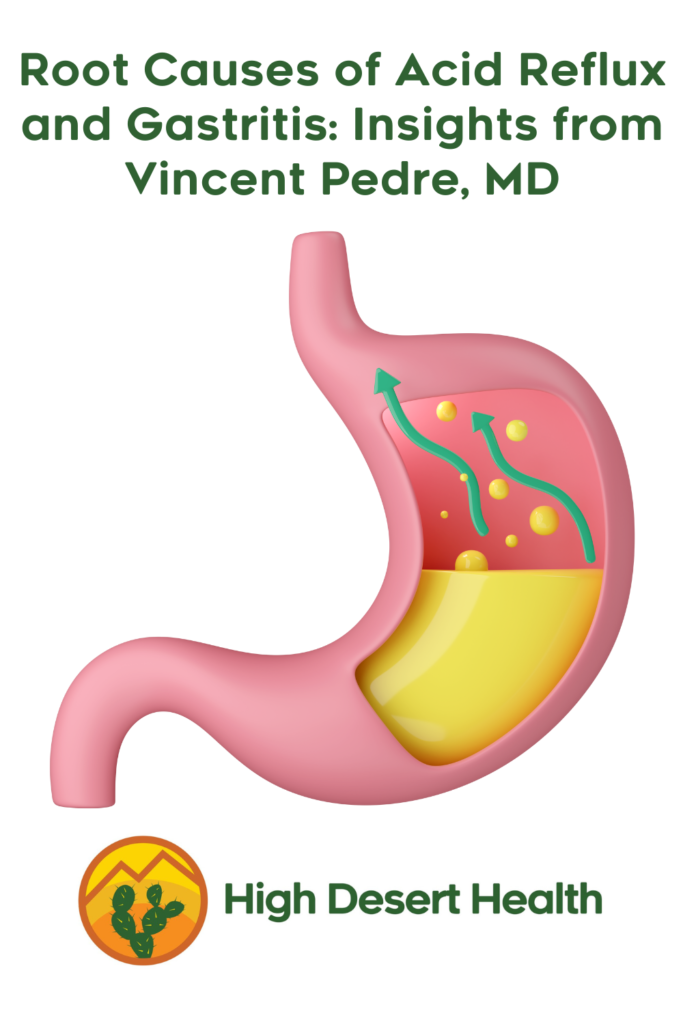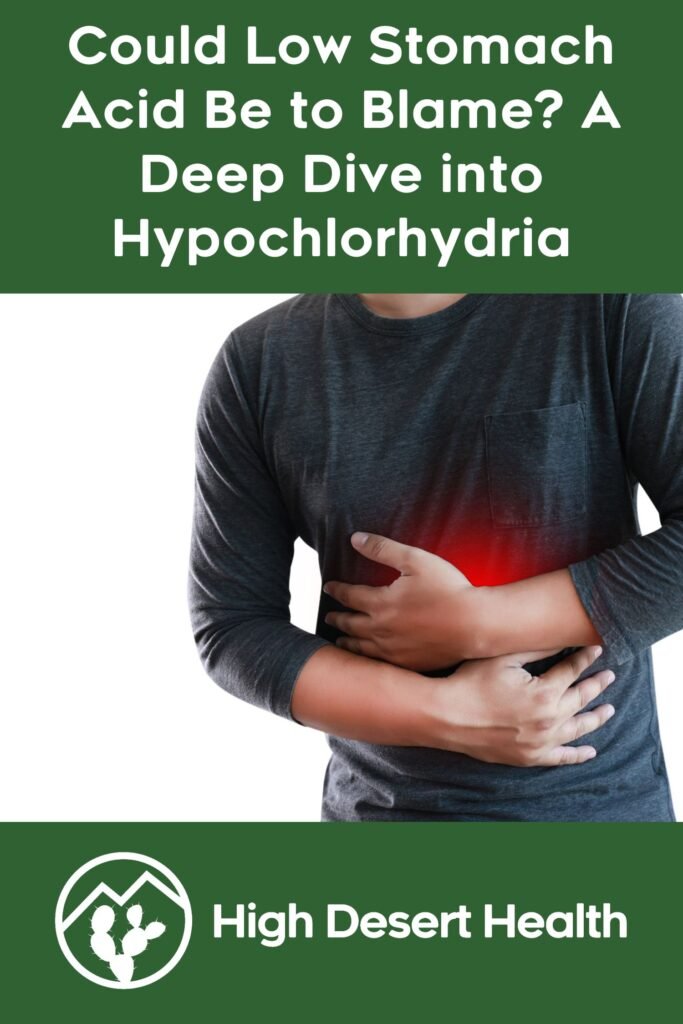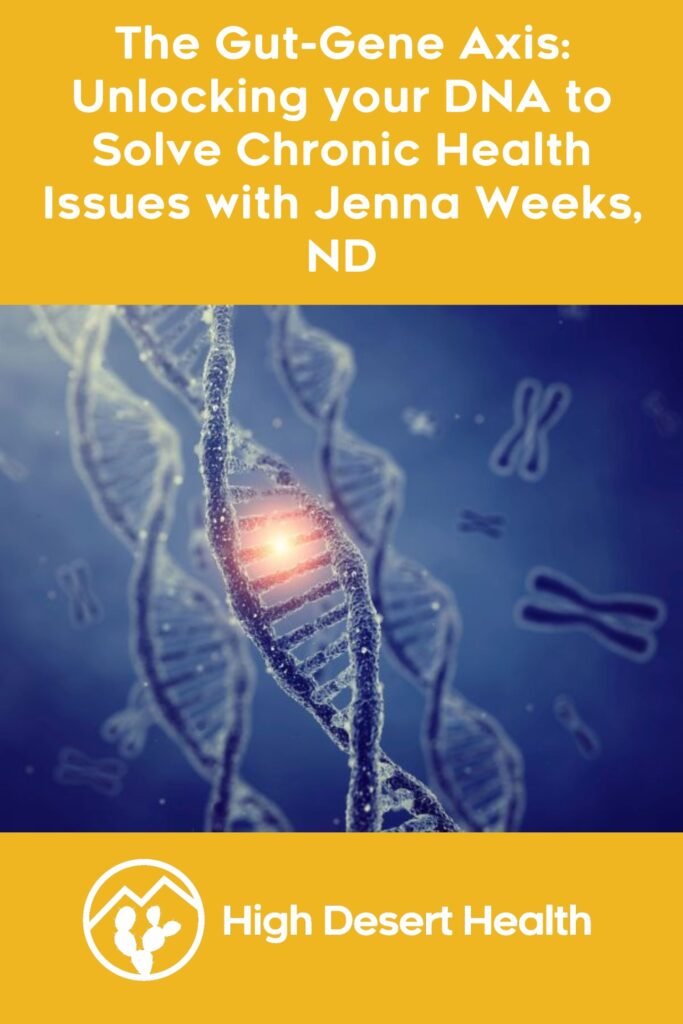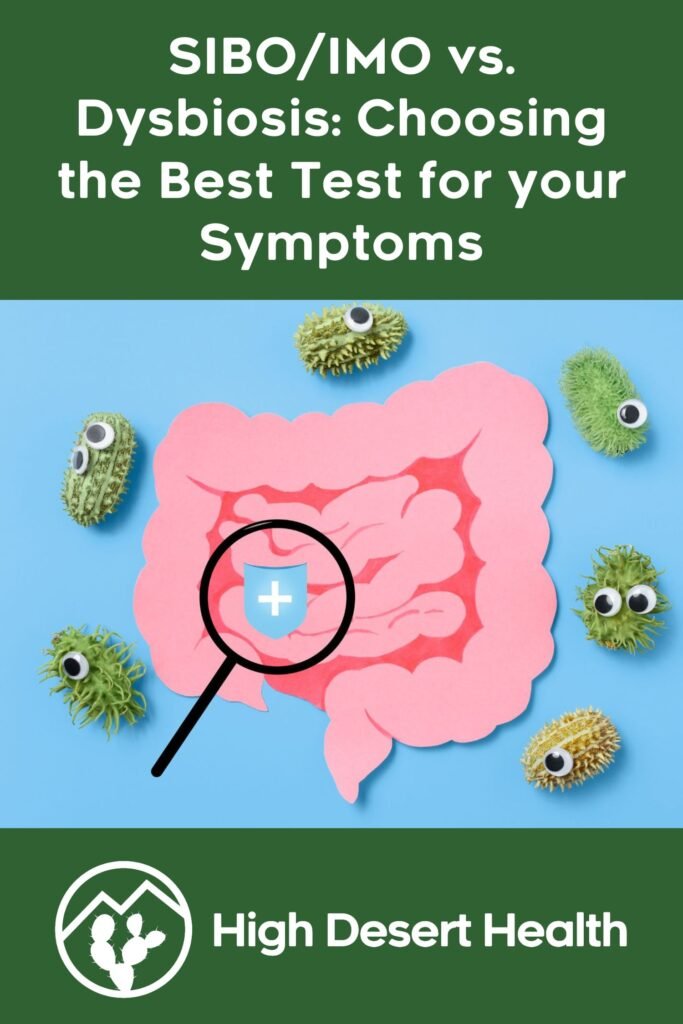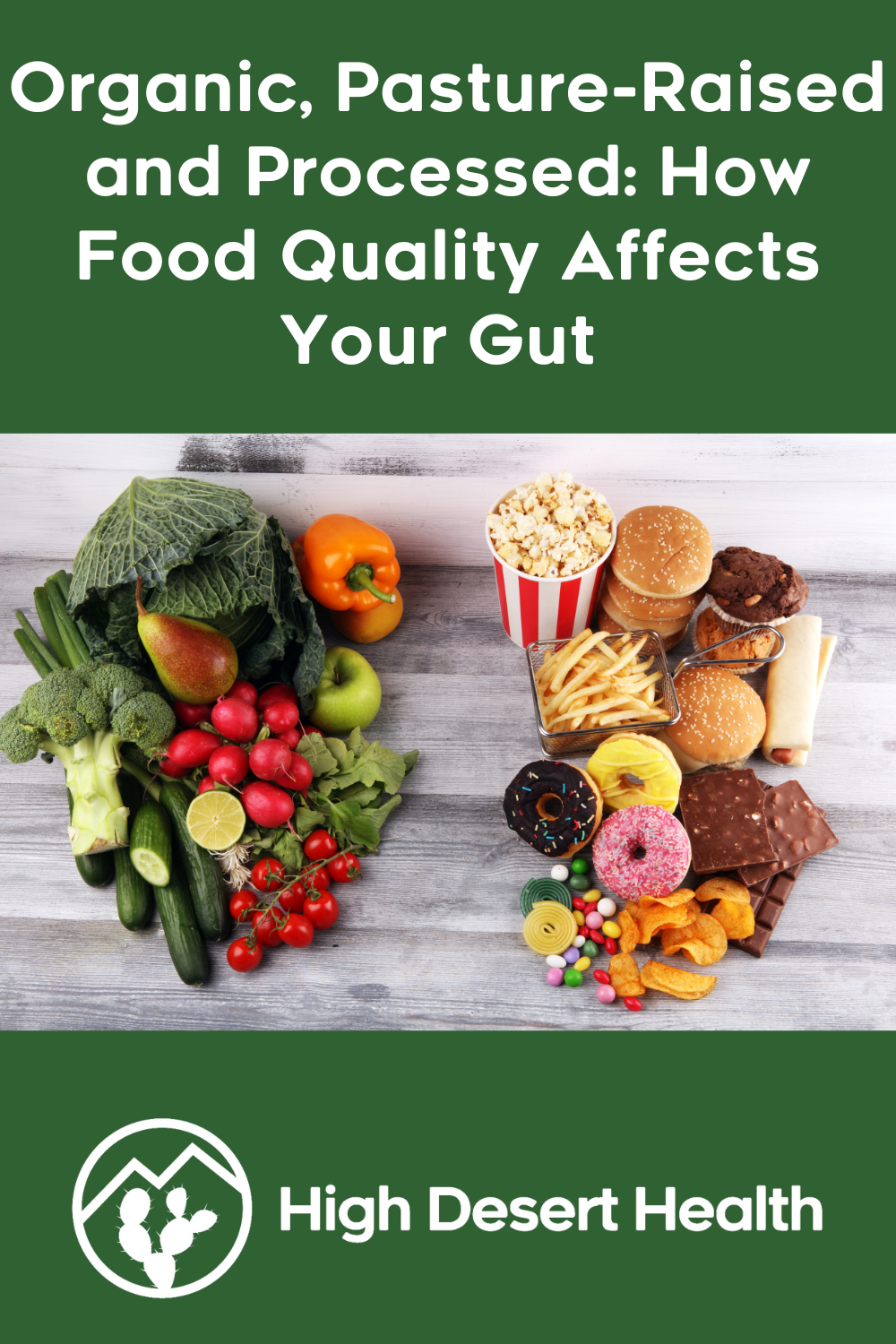
Adapted from episode 137 of The Perfect Stool podcast with Lindsey Parsons, EdD, and edited for readability.
What does healthy digestion look like?
Let me start by briefly describing what a healthy digestive system looks like and how that interacts with the food you eat. While there has been a lot of focus on the importance of diversity in the gut microbiome in health, primarily because that means that if you lose one species or strain that performs a certain function in your microbiome, then another one can take over that function, there is no set number of bacteria that has been agreed upon that constitutes an acceptable number. Having interpreted many stool tests, and more and more using metagenomic sequencing tests, I think a more relevant question is whether there are large overgrowths of pathogenic bacteria than how many species or strains you have in total. It has been proposed that a microbiome that is 85% commensal or healthy bacteria with 15% or fewer pathogenic bacteria is a healthy microbiome.
But beyond the microbiome, there is also the functioning of the digestive organs. In a healthy digestive system, you will have adequate amounts of salivary amylase starting to break down food in your mouth, the lining of the cells of the stomach will be intact and not inflamed, so that your stomach will be sufficiently acidic to break proteins into amino acids and to keep your lower esophageal sphincter from opening up and letting acid into your esophagus. Your stomach acid will also be sufficient to kill off the majority of incoming pathogens that may be slipping in with your food. And you will have the release of intrinsic factor from the parietal cells lining your stomach so that you can absorb vitamin B12 from your food. Sufficient stomach acid will also help with the absorption of calcium, magnesium and possibly zinc.
Then as the food passes out of your stomach, you will have sufficient bile released into the duodenum, the first part of the small intestine, to both help in digestion and to raise the pH or alkalinize the chyme, or mashed up food mixed with stomach acid, that’s exiting the stomach. The bile is produced by the liver and stored in the gallbladder and released by the gallbladder when it senses fat in your food, and it emulsifies fats like dishwashing detergent does on grease so that they can be broken down further and absorbed. In a healthy digestive system, the bile is of sufficient fluidity not to get stuck in the bile ducts and clog them up or form stones. So if that’s all going well, you should be absorbing fatty acids properly from your food, provided you’re not deficient in l-carnitine, an amino acid found primarily in animal products or produced by your body from l- lysine, or in vitamin B2, which are necessary for bringing fats into the Krebs cycle to produce energy. Bile also is taken in and transformed by your gut microbiome through various enzymatic processes resulting in secondary bile acids, which perform distinct biological activities of their own, which science is only beginning to unravel.
Then a healthy and intact pancreas will release sufficient pancreatic enzymes to help digest your food. These include amylase, which breaks down carbohydrates, lipase, which breaks down fats, protease and elastase, which break down proteins and trypsin and chymotrypsin, which digest proteins. Then the cells lining the small intestine will also release what are called brush border enzymes, which further help to break down your food. Some key ones include maltase, which breaks down maltose into glucose, sucrase, which breaks down sucrose (table sugar) into glucose and fructose, lactase, which breaks down lactose (milk sugar) into glucose and galactose, and peptidases, which break down peptides (or small protein fragments) into amino acids. So most of the nutrient absorption is happening in the small intestine.
Now along with food, you will bring in things that are not food with your food – and that’s where the role of the gut immune system comes into play. Seventy percent of our immune system resides in the gut, because that’s one of the primary places where the outside world comes into contact with the inside world. There’s a wide variety and complexity of immune cells in the gut, most of which I don’t fully understand, but I will say that one that we measure on stool tests, secretory IgA, is produced by B cells and plasma cells in the gut, and serves to bind to pathogens and toxins and prevent them from attaching to the gut lining. It also neutralizes viruses, bacteria and toxins before they can invade tissues. Secretory IgA, along with other gut immune cells, are your second line of defense after the stomach acid, and prevent you from getting sick from the pathogenic bacteria that inevitably come in with your food.
Secretory IgA also selectively culls the microbiome, binding to pathogenic microbes and promoting the growth of beneficial ones, and it does its work without triggering inflammatory responses, which protects the gut from excessive immune activation. It also helps train the immune system to tolerate beneficial microbes and dietary components.
Then your gut microbiome is your third line of defense. If you have a healthy gut microbiome, each group of microbes will occupy a certain niche in the gut. As a result, pathogenic bacteria entering the gut will not have any place to settle and make a home. This is why you often see gut health issues appearing following antibiotics – as bacteria are killed off, niches open up in the gut into which pathogenic bacteria can enter or opportunistic or otherwise not harmful bacteria can overgrow and become problematic. And certain bacteria, in particularly the spore-forming bacteria from the genus Bacillus found in spore-based or soil-based probiotics like Just Thrive*, Megasporebiotic*, Proflora 4R*, CoreBiotic* or ProBioSpore* also can secrete antibiotics that kill off other bacteria. In fact, they have a quorum-sensing capacity of finding overgrown bacteria then getting next to them and secreting these natural antibiotics. Based on the name, you can probably tell that they naturally come from soil, so traces of soil may bring them in naturally, or they may come from the tissues of plants, via air or water or from fermented foods.
Now back to the major organs, although it could be argued the microbiome is an organ, once most of the nutrients are absorbed in the small intestine, the food hits the large intestine, whose primary role is to absorb water and electrolytes from partially-digested food. This is where the majority of the microbes live. These microbes actually produce B vitamins and vitamin K, which are absorbed into the blood, and ferment the leftover undigested fiber into short-chain fatty acids. These short-chain fatty acids serve as a primary source of energy for the colonocytes or colon cells, help to maintain the integrity of the gut barrier, modulate inflammatory responses, and promote immune tolerance and impact insulin sensitivity, glucose uptake and fat storage. There are four of them: acetate, which plays a role in regulating appetite and energy expenditure, propionate, which may contribute to cholesterol metabolism and blood sugar control, valerate, which supports energy production, reduces inflammation, helps maintain the gut barrier and modulates microbiota balance, and butyrate, considered the most important short-chain fatty acid, which maintains gut barrier function and has anti-inflammatory properties.
So everything I just described assumes that you’re getting all the nutrients necessary from your diet to keep everything functioning well. And that you’re not getting too many anti-nutrients or toxins that would impair gut function. So now let’s move on to some of the types of foods that can cause damage to the gut.
How can food damage the gut?
Let’s start with fast food. Of course, I understand why people sometimes feel the need to eat fast food out of convenience: it’s cheap, fast and if your taste buds haven’t been trained to appreciate good food, tastes good. You don’t have to deal with prepping ingredients or doing the dishes after. Instead, all you have to do is drive 5 minutes to your local fast food restaurant and have a meal ready in the same time it would take you to chop an onion. However, fast food only solves short-term problems at the cost of long-term consequences. Most fast food is made up of Ultra Processed Foods, or UPF’s. These aren’t foods that are grown in a garden or on a farm, but instead created in factories by combining chemical compounds, inorganic ingredients and other synthetic additives, including artificial flavors, colors, emulsifiers and preservatives. These foods are designed to be hyper-palatable and addictive but often lack nutrition, especially fiber, which is integral to proper gut functioning, if you recall, that production of short-chain fatty acids that leads to healthy colonocytes and reduced immune activation. Ultra processed foods supply your body with empty calories and foreign substances that are difficult to digest, potentially causing a huge variety of health problems, both in the short term and long term. Some common adverse health effects associated with consuming UPFs include obesity, cancer, type-2 diabetes, cardiovascular disease, irritable bowel syndrome, depression and even all-cause mortality. Some common ingredients you might see on nutrition labels for UPFs include high-fructose corn syrup, hydrogenated or interesterified oils and hydrolyzed proteins. If you see these ingredients in the foods you are buying, you are eating UPFs.
High fructose corn syrup is especially ubiquitous in the American diet and it has been shown to be closely related to the increased prevalence and severity of multiple diseases, including inflammatory bowel disease, gut-liver axis dysfunction, and more. High fructose corn syrup has been shown to exacerbate intestinal inflammation and deteriorate intestinal barrier integrity, worsening existing gut conditions and increasing the risk of developing new ones. Trans fatty acids, another common ingredient in ultra-processed food but not shown on the nutrition facts label because if there’s less than 0.5 grams, they aren’t required to list it, also contribute to gut inflammation and increase the risk of developing metabolic syndrome, diabetes and coronary artery disease. They’re so unhealthy that the FDA actually banned any amount exceeding 0.5 grams/serving of them in our food. But if you see any oil called “hyrogenated” on the label, they’re in there.
And then there’s the thickeners and emulsifiers like carrageenan, xanthan gum, guar gum, locus bean gum, polysorbates and propylene glycol that have been implicated in helping cause and exacerbate inflammatory bowel diseases (that is, Crohn’s and colitis).
Eating fast food can cause changes in the gut very quickly. In as short as a few days after eating a high volume of UPFs, your gut microbiome’s ability to optimally digest food is impaired. UPF’s kill fiber-fermenting bacteria in your gut, decreasing your body’s ability to digest food, excrete toxins and absorb nutrients. Eating UPFs also increases intestinal permeability, allowing harmful substances to enter the bloodstream, sending inflammation beyond the gut.
And you may think that eating some UPFs, like some chips, desserts or other snack food isn’t a big deal, but they contain anti-nutrients like phytates or phytic acid, which is found in grains and binds to minerals like zinc, iron and calcium, reducing their absorption. And the sugar requires extra zinc to process it, as zinc is used in insulin production and carbohydrate metabolism. So imagine you’re always eating grains and sugar alongside foods high in zinc like meat and seeds. You may end up deficient in zinc, as one example.
Zinc has numerous roles in the digestive system, including serving as a cofactor for over 300 enzymes involved in digestion and metabolism, strengthening the tight junctions between intestinal cells, preventing toxins and pathogens from entering the bloodstream, supporting immune cell activity in the gut-associated lymphoid tissue, reducing inflammation and promoting balanced immune responses, contributing to the production of stomach acid, which is vital for breaking down food, killing harmful bacteria and activating digestive enzymes like pepsin, which is essential for protein digestion. It’s also essential in healing and repairing tissues, making it important for healing ulcers or damage to the gut lining caused by conditions like gastritis. Zinc helps with the absorption and transport of other nutrients like vitamin A, which is also important for gut health. Vitamin A, in the form of its active metabolite retinoic acid, helps immature immune cells differentiate into specialized cells that enhance mucosal immunity and drive the production of IgA-producing plasma cells in mucosal tissues. So you can see how eating processed foods, which contain few nutrients and some antinutrients can start a zinc deficiency which can then cascade into other deficiencies like protein and vitamin A, which will further break down the digestive system and its immune system.
That being said, for those of you panicking that you’ve ruined your gut by eating McDonald’s once last week, don’t worry! The effects of eating fast food can be reversed by regularly eating organic, nutrient-rich, whole foods, and focusing on high-fiber foods like beans and lentils, aka legumes.
Speaking of organic, with the official organic designation, you can know that the foods you’re eating aren’t genetically modified, are grown without the use of harmful chemical fertilizers and are grown with sustainable practices. Not genetically modified means that your body will recognize them, and that they won’t be doused in the herbicides that genetically modified foods were designed to resist. Organic fruits, vegetables and grains often contain higher levels of polyphenols — compounds known to nourish beneficial gut bacteria and promote the production of short-chain fatty acids. Organic farming methods can also result in foods with slightly higher levels of certain micronutrients, which may indirectly support gut microbiota health, and are more easily digestible than conventional and synthetically-supplemented foods. For example, if you’re eating conventional bread, it will likely have added B vitamins, as in the US white flour is usually enriched, because when you remove the bran and the germ from a wheat kernel, you remove the B vitamins. So they will add them back, but in the form of the cheapest, least absorbable forms of B vitamins – so folic acid rather than methylated folate, which people with MTHFR mutations do not absorb well, and B12 in the form of cyanocobalamin, rather than methylcobalamin, which is also much less usable by people with mutations in the MTHFR, MTR and MTRR genes, which are incredibly common. Of course, you can avoid this problem by eating whole wheat bread, but when you add on the organic component, you are also eliminating the pesticides, which is the most important aspect of eating organic.
Why is glyphoste of particular concern?
I’ll mention one pesticide in particular today, glyphosate, because it’s become omnipresent and has particular concerns for the gut microbiome. Dr. Stephanie Seneff, glyphosate researcher and author of Toxic Legacy: How the Weedkiller Glyphosate Is Destroying Our Health and the Environment*, has proposed several hypotheses about how glyphosate may impact the gut microbiome. Glyphosate preferentially harms beneficial bacteria from the genera Lactobacillus and Bifidobacterium while allowing opportunistic pathogens like Clostridium difficile to thrive. It also impacts the shikimate pathway present in many gut bacteria, which is critical for the synthesis of aromatic amino acids (e.g., tryptophan, tyrosine and phenylalanine). Disruption of this pathway could limit these essential nutrients and affect gut health. It also may promote the formation of protective biofilms by some harmful bacteria, which can make them harder to eliminate.
Glyphosate is also a chelating agent, meaning it binds to metals, in particular, manganese and molybdenum. This can reduce the bioavailability of molybdenum, a trace element necessary for enzymes involved in detoxification (e.g., sulfite oxidase and xanthine oxidase). Molybdenum-dependent enzymes help break down sulfur compounds and purines. A deficiency might impair these processes, potentially contributing to issues like sulfite sensitivity and uric acid buildup. This is believed to be one of the issues in hydrogen sulfide SIBO, now known as intestinal sulfur overgrowth or ISO. Dr. Seneff has also postulated and found some evidence to support the fact that glyphosate, which differs only slightly from the amino acid glycine, may be substituted for glycine in the formation of proteins in plants, and then incorporated into the human body this way. Glycine is particularly important in collagen formation and is one of the three amino acids that make up glutathione, our master antioxidant and the second most abundant molecule in the body after water. And I’ve seen over and over on my clients’ organic acids tests an elevation in benzoic acid and much lower hippuric acid, which is indicative of an absence of glycine, which is used to convert benzoic to hippuric in the liver. Not to mention low glycine on amino acid tests and markers of low glutathione status. So I believe I’m seeing concrete evidence of the harm of glyphosate from non-organic food in clients.
Chronic glyphosate exposure has also been linked to anxiety, depression, Alzheimer’s, Parkinson’s, and other neurodegenerative diseases, though these links aren’t fully proven. Some studies suggest glyphosate may impact brain function and increase the risk of neurological conditions due to its potential interference with neurotransmitter function and mitochondrial health. It has also been connected to osteoporosis due to the depletion of minerals and nutrients like manganese, calcium and magnesium, and could potentially contribute to bone density loss. Finally, there is emerging evidence suggesting that glyphosate may have endocrine-disrupting effects, which could influence fertility in both men and women.
So if you’re trying to avoid glyphosate, you should know that genetically modified crops were created to resist being killed by this herbicide to allow for Round-Up, the brand name of glyphosate, to be sprayed liberally on crop fields to kill off weeds. Soybeans, corn, cotton, canola and sugar beets are crops specifically genetically modified to resist glyphosate, so if you’re eating or using those conventional products, you will be taking in glyphosate. Unfortunately, glyphosate is also used for pre-harvest desiccation (drying crops for uniform harvesting) on non-GMO crops, particularly wheat, oats, barley and sadly, lentils and pulses too like chickpeas and peas. Glyphosate is also applied in orchards and vineyards to control weeds around trees and vines. The only way to protect yourself from this exposure is to eat organic. And not just organic vegetables, but bread, grains, pastas, legumes, corn products, etc. As for vegetables, if for budget reasons you need to prioritize, choose organic from the EWG’s Dirty Dozen list and you can eat conventionally raised crops from their Clean 15 list. But be sure to check for the new lists each year.
What is superior about pasture-raised or grassfed meat and dairy?
When it comes to meat and dairy, I often think that it’s even more important to focus on the highest quality foods (than say organic vegetables) because these animal foods represent the top of the food chain, which means that all the pesticides and toxins these animals take in accumulate in their fat, which makes up part of the meat and of course the fat in dairy products. Studies have also shown that pasture-raised meat and milk contain higher concentrations of anti-inflammatory omega-3 fatty acids and CLA (conjugated linoleic acid), which is also anti-inflammatory, promotes lean muscle mass and insulin sensitivity.
Pasture-raised products are also higher in carotenoids, and antioxidants like vitamin E and have lower levels of toxic trans fats compared to grain-fed animals. And in this case, often the organic designation is a less important question, especially if you’re dealing with a small farm or a local producer who can’t afford to get organically certified, but the term to look for is pasture-raised (not to be confused with pasteurized). You may also see the term grass-fed for beef and lamb, which can be problematic because many producers will mark ground beef as grass-fed, if the animal was fed grass at any point in its life, when in fact, the cows were corn-finished, eliminating the benefits of grass feeding earlier in the animals’ lives. Corn is not a natural part of a cow’s diet, which should be primarily grass. High starch, low fiber corn leads to excessive acid production in the cows, which causes bloating, ulcers, liver abscesses and discomfort, a negative shift in the microbiome and increased methane emissions from cows. Methane is 80-85 times more effective at trapping heat in the atmosphere compared to CO₂ over a 20 year time span, so a way more potent contributor to climate change, not to mention when you have massive feedlots of cows together, they generate massive amounts of manure, which is not used to fertilize crops but rather stored in lagoons, which emit methane and can leak into water sources.
So “grass-finished” is a better term than “grass-fed”, if you have the option. Often the best way to find such products is to look online and find a local farm that delivers in your area. This usually involves having to plan ahead and get a meat delivery weekly or monthly, and recognizing that most of the cuts of meat from a grass-fed animal are not steaks, and those will be much more expensive. So plan on using a variety of cuts in your cooking. Pork can also be pasture-raised, but not grass-fed, as pigs don’t eat grass. Pasture-raised pigs are able to eat a diverse diet of plants, insects and nuts, in addition to being fed silage and grain. And they are raised more humanely, of course, exposed to sunshine and are able to forage, run, jump and root in the soil. Pasture-raised pork is higher in nutrients like vitamin D, selenium and omega-3 fatty acids, and lower in saturated fat.
And of course, chicken can be pasture-raised as well, which is especially important when buying eggs, because terms like free-range are essentially meaningless, as chickens raised indoors in giant henhouses and overstuffed with food to produce giant breasts can hardly walk, and the one-door in the entire, giant place rarely produces much of an exodus. Eggs from pasture-raised chickens contain significantly more omega-3 fats, and have higher levels of vitamins A, D and E. You can tell a truly pasture-raised egg from the color of the yolk alone, which is a much deeper orange from beta carotene, much like the darker yellow you can see in pasture-raised butter. So for your gut health, pasture-raised meat, dairy and eggs add up to better gut health and reduced inflammation, not to mention a much more humane way to raise animals.
Why is a plant-forward diet important for the gut microbiome?
Some people would argue against eating animal products at all, but I do believe that most people benefit from them nutritionally. But of course, we could all benefit from eating more plant-based proteins in the form of beans, peas, lentils, nuts, seeds, quinoa and oats, which also offer the benefit of an increased amount of fiber, which is essential for producing short chain fatty acids and having optimal colon health. I recommend ¼ to ½ cups of legumes a day for optimal gut health. Plant-based proteins are also less associated with pro-inflammatory pathways compared to diets high in processed foods and animal-derived foods. Finally, plant-based proteins are linked to a lower risk of chronic diseases, such as type 2 diabetes, obesity and certain cancers, due to their lower saturated fat content and higher fiber content. Despite all of this, be sure to check the ingredients in your plant-based proteins to ensure they don’t contain UPFs or other harmful additives that may counteract their beneficial effects. Many meat substitutes are just processed soy products raised with heavy pesticides and filled with unhealthy additives.
Eating plant-based and animal-based proteins, if you’re able to, is a great way to optimize your gut’s functionality and your protein and nutrition intake. Combining plant and animal proteins is a great way to get a more complete mix of amino acids. Plant proteins often miss some essential amino acids that animal proteins have in abundance, so pairing them together helps fill in the gaps.
Are all processed foods bad for you?
It’s important to note that most foods are processed in some way. Most foods are put through machinery to be sorted and packaged. However, not all processed foods are bad for you. One such example is fermented foods. Fermentation is technically a form of processing food, but these foods, such as yogurt, kimchi and sauerkraut, can bolster your gut’s microbiome. Just check the additives, as many yogurts contain additives such as gums and thickeners, lots of added sugar and more and more, harmful artificial sweeteners. But overall, consuming fermented foods produces bioactive peptides, biogenic amines, and other metabolites like short-chain fatty acids, which are associated with improved digestion and reduced inflammation.
Since all packaged foods are processed in some ways, sometimes it is difficult to discern between Ultra Processed Foods and less processed foods as there is no clear indication on most product packaging. Instead, you can look at the ingredient list for some of the chemical compounds that I’ve mentioned today, unfamiliar chemical names [but be careful you aren’t confusing nutrient names like ascorbic acid (vitamin C), retinol (vitamin A), tocopherol (vitamin E), calciferol (vitamin D) or thiamine hydrochloride (vitamin B1) for chemicals. You can also look foods up in the Environmental Working Group database of food scores. But in general, less processed foods don’t include chemical additives or inorganic compounds; they are much easier to digest and absorb nutrients from, compared to UPFs and fast food. Eating fast food every once in a while when you’re in a bind and need a quick bite will not destroy your gut microbiome. However, eating it regularly will impact your gut’s functionality in the long term.
Some people find that meal prepping on the weekends makes it easier to eat healthy during the week. And I’ve gotten into the habit of soaking beans overnight even if I have no specific plans for them, then popping them into my instapot with some chicken bouillon and spices and sometimes vegetables and making a quick soup or beans to throw on salads or for a small fiber and protein-rich main or side dish. An adequate intake of fiber for men is 30-38 grams a day and for women is 21-25 grams, and that’s hard to reach without including legumes in your diet.
Well, my goal in this podcast was to convince you that it’s worth it to switch to organic, pasture-raised and minimally-processed foods. I hope I achieved that goal by giving you some specific details about the impacts of these foods on your digestive system and body. If cooking is a big challenge for you, you might try looking into some of the organic meal services that offer pre-made cooking kits.
If you’re dealing with gut health issues of any type and need some help, I see individual clients to help them resolve their digestive issues and you’re welcome to set up a free, 30-minute breakthrough session to see if you’d like to work with me. I also have my own two products, Tributyrin-Max, which is particularly helpful for loose stool and diarrhea as it slows your motility and firms up your stool, and SBI powder, which is an all around gut pathogen binder, which is super safe and won’t harm beneficial bacteria, and is usually the first line of treatment I educate my clients about in order to avoid stronger antimicrobial herbs.

*Product and dispensary links are affiliate links for which I’ll receive a commission. Thanks for your support of the podcast by using these links. As an Amazon Associate, I earn from qualifying purchases.


